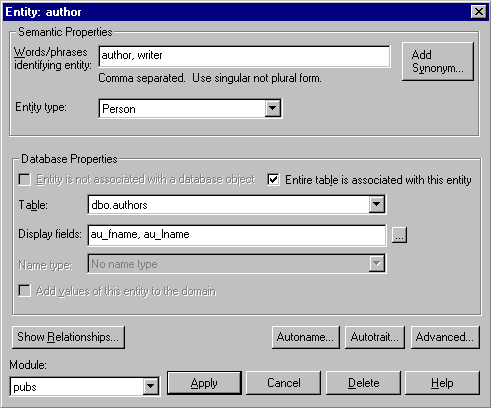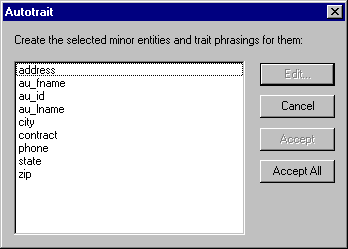 To create an entity
To create an entity
Now you are ready to start adding semantic entities. This consists of defining the entities in your database and the tables or fields with which they are associated.
 To create an entity
To create an entity
Major entities usually correspond to entire tables. If it is a major entity, then enter the fields that should be used to display the entity, such as name or address.
This illustration shows this process for the entity “author” in the pubs database.

Major entities have two kinds of minor entities associated with them: names and traits. Names indicate how the entity is identified in questions and statements. By clicking Autoname for the author entity, you can create an entity that represents the name of the author entity, associated with the first and last name fields. You can create such name entities for major entities that are represented by entire tables so the user can identify the specific entity in question.
By clicking Autotrait, you can create traits for the entity: minor entities that the major entity has. Click Accept All to create minor entities for all of the semantically meaningful fields, as well as for trait relationships between the major entity and the newly created minor entities.

In general, you should create entities for all tables in the database. By using Autotrait, you can create entities for all fields in the database.